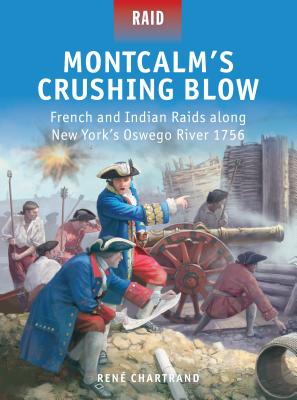Email or call for price
Description
With expert analysis and lively narrative, this engaging study of the Oswego raid casts light on a daring feat of arms at the height of the French and Indian War.
The year 1755 saw the rivalry between Britain and France in North America escalate along the Great Lakes into open warfare as both sides sought to overcome the other's forts and trading posts. Lord Loudoun and the Marquis de Montcalm were sent from the mother countries to take charge, but the French lost no time in seizing the initiative, adopting Canadian-style "wilderness" tactics and planning a series of raids to keep the enemy on their toes.
Amid the snows of March 1756, a 360-man French, Canadian, and Indian force stormed an Anglo-American outpost named Fort Bull in a surprise attack that left few survivors and the fort reduced to charred remains. Fort Bull's fall meant that the Mohawk River, the communication route between British-held Albany and the large and important Anglo-American post at Oswego, could now be cut off. Oswego, on the shore of Lake Ontario, had a formidable garrison based in three forts, named Pepperrell, George, and Ontario. The newly arrived Montcalm was tasked with the job of taking Oswego from the Anglo-Americans.
In July and August 1756, Montcalm's 3,000-strong force - including a full train of artillery, 80 pieces strong - was transported in hundreds of sailing ships and craft. The Anglo-Americans failed to spot the approaching French forces until they had landed and secured their positions. Having surrounded and invested the forts, the French soon knocked out of action a number of British guns. The British evacuated Fort Ontario and then, at 9am on August 14th, a French cannonball killed the British commander, Colonel James Mercer. His successor, Colonel John Littlehales, did not have the stuff of a hero; an hour later, the white flag went up and Oswego surrendered just in time to avert a major onslaught.
The Oswego raid was an outstanding French success; it denied the British a presence on Lake Ontario for the next two years, and relieved British pressure on Fort Frontenac. It demonstrated that the use of traditional European siege tactics in an American setting could reap great rewards, and had a great influence on the French's Indian allies too.
About the Author
RENÉ CHARTRAND was born in Montreal and educated in Canada, the United States and the Bahamas. A senior curator with Canada's National Historic Sites for nearly three decades, he is now a freelance writer and historical consultant. He has written numerous articles and books including over 50 Osprey titles. He lives in Quebec, with his wife and two sons.
Peter Dennis was inspired by contemporary magazines such as Look and Learn, leading him to study Illustration at Liverpool Art College. Peter has since contributed to hundreds of books, predominantly on historical subjects, including many Osprey titles. A keen wargamer and modelmaker, he is based in Nottinghamshire, UK.
Mark Stacey was born in Manchester, UK, in 1964 and has been a freelance illustrator since 1987. He has a lifelong interest in all periods of history, particularly military history, and has specialized in this area throughout his career. He now lives and works in Cornwall.
Praise For…
“A good addition to a French and Indian War library.” —IPMS/USA
